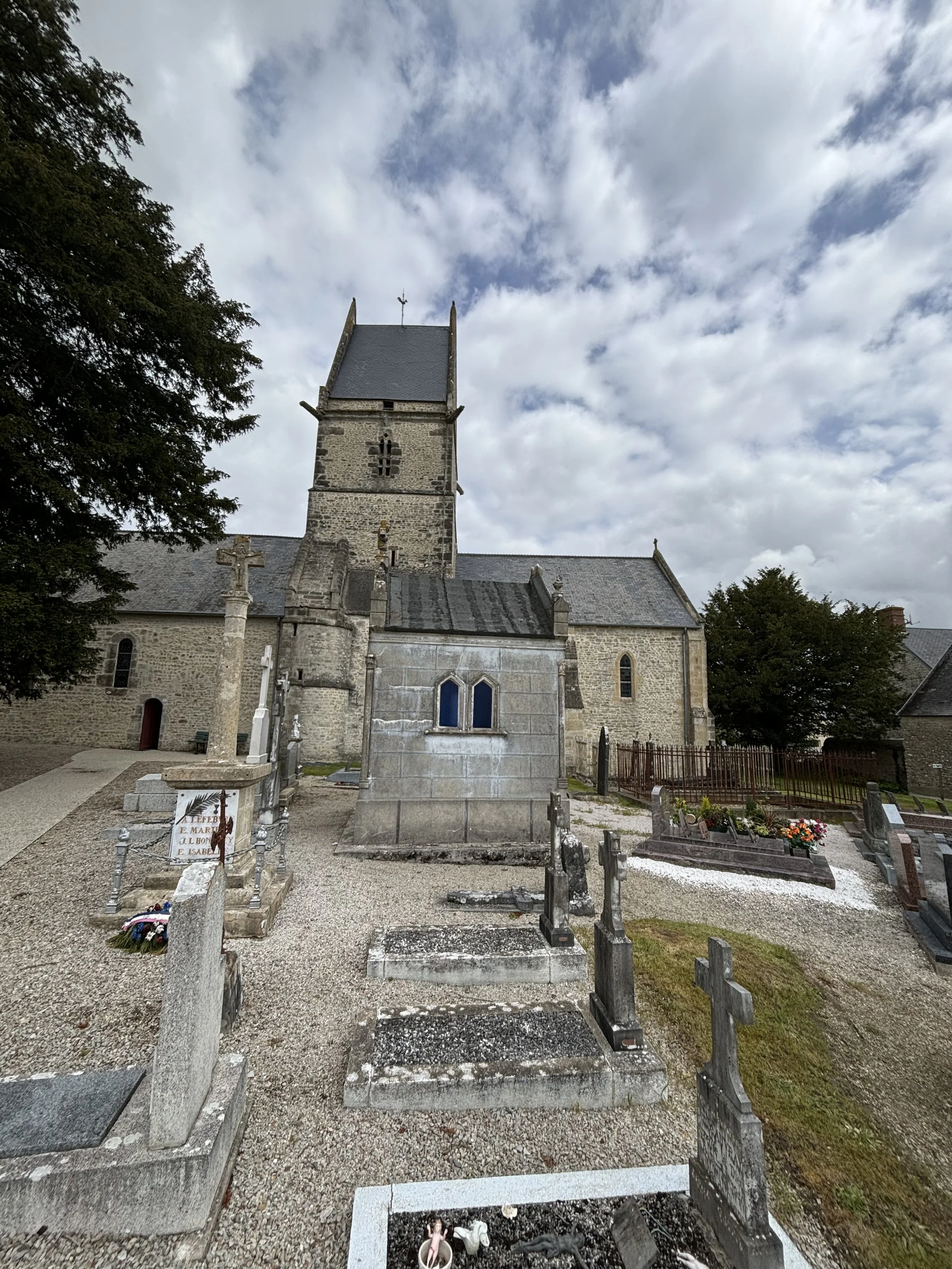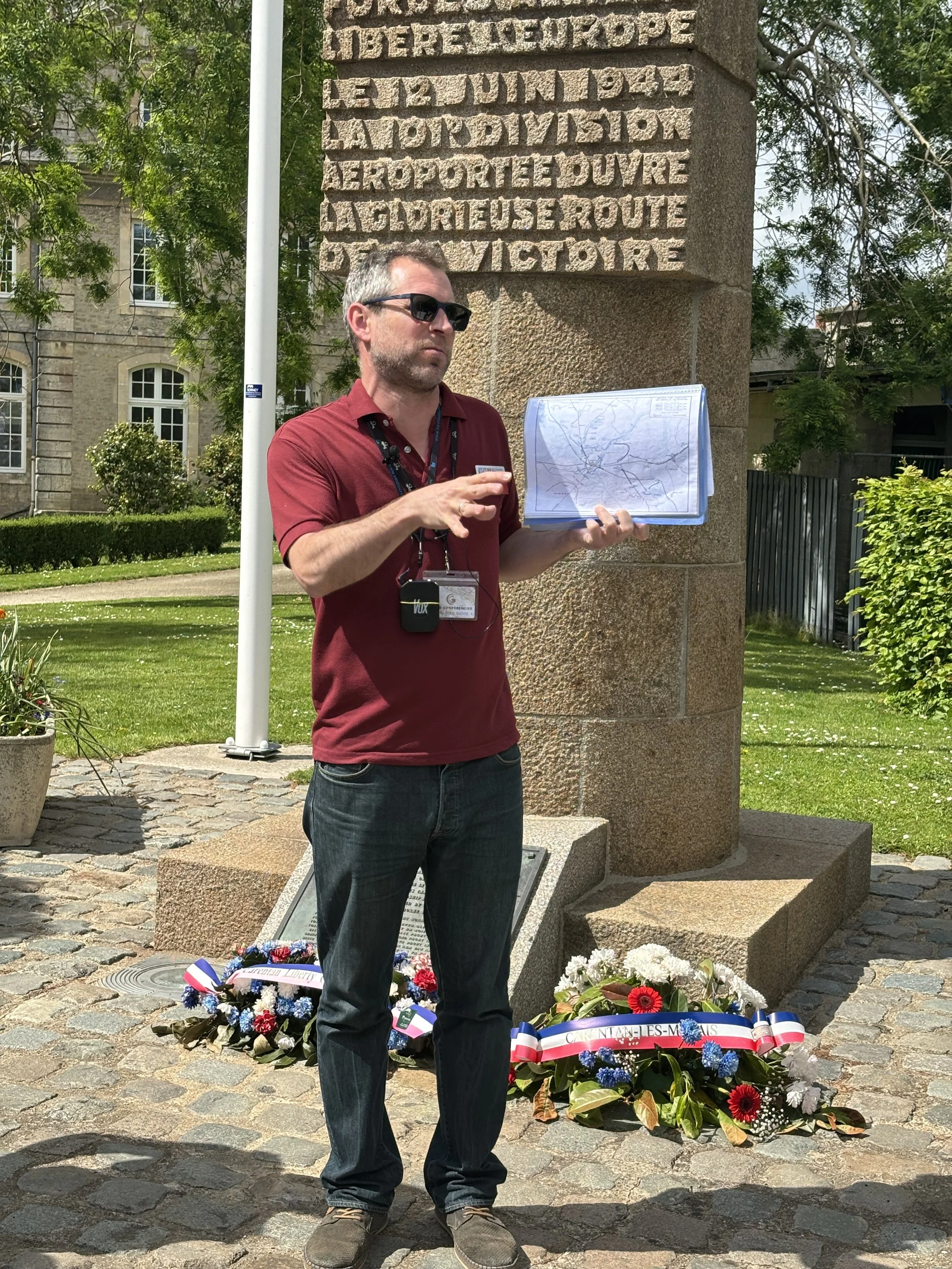Moving Inland with the Band of Brothers
The Richard D. Winters Leadership Monument, situated between Sainte-Marie-du-Mont and Utah Beach in Normandy, is dedicated to the memory of junior U.S. military officers who served valiantly on D-Day. 156,000 Allied infantrymen came ashore in the invasion June 6, 1944. By June 11, the shoreline was secured.
Soon after dropping into France and meeting up with fellow paratroopers on D-Day, members of Easy Company, along with a few tag-alongs, were assigned the task of silencing the German guns slaughtering Allied soldiers moving in from the portion of the shoreline designated Utah Beach, across the infamous Causeway #2. The deadly guns were emplaced in bunkers on a French estate called Brécourt Manor—four howitzers manned by 60 Germans. Lt. Dick Winters was summoned to lead 23 paratroopers in the operation in what military analysts later called a “textbook assault” on a fixed position. Winters was awarded the Distinguished Service Cross for the battle, with three others earning the Silver Star and 11 receiving the Bronze Star. The successful attack helped give the soldiers on Utah Beach an easier landing than their brethren on Omaha: 2400 soldiers died on Omaha beach while 200 lost their lives on Utah. There’s an interesting side note on the battle at Utah: 14 Comanche “code-talkers” were in the ranks that day. Using their Native American language, they relayed critical tactical messages indecipherable to the enemy.
There is not much to see at Brécourt Manor today, the concrete bunkers having been long removed and the acreage returned to verdant farmland. Our group had to scuttle out of the middle of the road more than once to make way for Normande cows ambling about on business. This peaceful habitat belongs to them once again, although they tolerate the stream of tour buses that ferry in visitors eager to learn the story of this place.
We passed next through Sainte-Marie-du Mont, the village situated at the end of the causeway that linked the beach to higher ground. We stopped at Angoville-au-Plain, where the contributions made by the boys from Toccoa are honored even now. In the days after D-Day, while fighting raged in this tiny hamlet, two young American medics from the 101st Airborne, Robert Wright and Ken Moore, set up a hospital in a small church. The only condition of treatment at the makeshift clinic was that all soldiers had to leave their weapons outside. The medics saved untold numbers of American and German lives, the blood of these patients still visible on the church pews. The first Sunday after D-Day, mass was celebrated here with dozens of Allied soldiers among the worshipers.
(Right) Église Saint-Côme et Saint-Damien d'Angoville au Plain (Church of the Martyrs Saint-Come and Saint-Damien)
(Above) Momument to the Tocca men in the churchyard. Stained glass windows feature the 101st Airborne’s Screaming Eagle emblem.
Photo of worship service at Église Saint-Côme et Saint-Damien just days after D-Day.
We moved next to the lovely port city of Carenten, where Easy Company engaged in house-to-house battles to take the city to ensure the Germans couldn’t split the Allied lines. Banners representing the Allied nations flapped over our heads, strung in advance of the D-Day anniversary just weeks away. In the center of town stands a monument to the heroes of the First World War. You’ve probably seen images of the soldiers of the 101st Airborne resting at the base of this monument. The Band of Brothers miniseries reimagines this scene, the paratroopers lounging against the concrete slabs, sharing observations of what they’ve endured so far and gathering themselves for what lies ahead.
(Left) World War One Memorial in Carentan where members of the 101st Airborne rested after D-Day. Note the tribute to C-company paratrooper Tom Rice on the building behind. Rice became a favorite son here, returning many times. (Right) banners flutter in advance of D-Day celebrations.
Nearby is the D-Day Experience Museum where visitors can climb into a C-47 Skytrain simulator. You’ll feel something of what the paratroopers felts as they were rocked by flak and anti-aircraft fire on their way to France, a simulation so authentic, I was relieved when my plane “landed” and we could exit the simulator.
“Stoy Hora” — the Douglas C-47 Skytrain at the D-Day Experience museum in Carentan. The Spanish translates to “I’m with you now.” This aircraft was used in the filming of Band of Brothers.
Sylvain was our guide throughout our tour of Normandy. He shared stories of his grandfathers, both of whom served in the war and helped liberate France.
Then it was on to the Netherlands. Here, we would learn more about the miscalculations that doomed Operation Market Garden, even as we dodged the zillions of bicycles in the streets—clearly, the preferred mode of transportation in Eindhoven.







